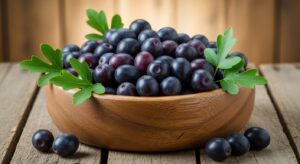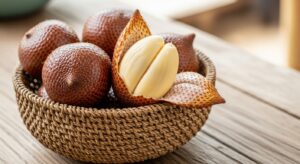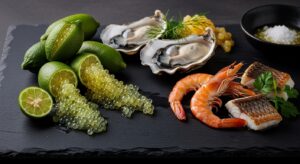When it comes to exploring the world of produce, there’s a fascinating group of fruits that go beyond the everyday apples and oranges — the niche fruits. These unique treasures, often grown in specific climates or regions, offer distinctive flavors, rare nutrients, and stories deeply rooted in culture and tradition.
From vibrant tropical varieties to rare temperate species, niche fruits bring adventure to your taste buds and variety to your kitchen. Let’s explore some remarkable examples and learn how to enjoy them in creative ways.
1. Dragon Fruit – The Tropical Showstopper

Also known as pitaya, dragon fruit captivates with its vivid pink or yellow skin and speckled white or magenta flesh. Its mild sweetness and crunchy seeds make it perfect for smoothies, fruit salads, or even grilled desserts.
Beyond its looks, this niche fruit is rich in antioxidants, vitamin C, and fiber — making it as healthy as it is beautiful. Try chilling it before eating for a refreshing tropical treat.
2. Buddha’s Hand – The Fragrant Wonder

One of the most unusual niche fruits, Buddha’s Hand looks like multiple yellow fingers reaching outward. While it lacks pulp, its fragrant rind is prized for flavoring.
You can use it to infuse sugar, make citrusy liqueurs, or zest it over pastries. The aroma is intensely lemony — perfect for natural home fragrance or as a decorative centerpiece.
3. Jostaberry – The Berry Hybrid You Didn’t Know You Needed

A cross between a black currant and a gooseberry, jostaberries are small, tangy, and packed with vitamin C. Their deep purple color and balanced tartness make them ideal for jams, pies, or even homemade wine.
Gardeners love this niche fruit because it’s hardy and resistant to common berry diseases, making it both delicious and practical.
4. Salak (Snake Fruit) – A Hidden Southeast Asian Delight

Native to Indonesia, salak gets its nickname from its reddish-brown scaly skin. Inside, the crisp, tangy flesh has a flavor reminiscent of apples and pineapples combined.
This exotic niche fruit is often eaten fresh or mixed into tropical fruit bowls. It’s rich in potassium and antioxidants, supporting heart health and hydration in humid climates.
5. Feijoa – The Pineapple Guava Secret

Feijoa, or pineapple guava, offers a unique combination of tropical and minty notes. Popular in New Zealand and South America, it’s an aromatic green fruit with jelly-like flesh.
You can scoop it with a spoon, blend it into smoothies, or bake it into muffins. As a niche fruit, it’s valued for its vitamin C and digestive benefits.
6. Jabuticaba – The Tree-Born Jewel

Native to Brazil, jabuticaba grows directly on tree trunks, creating a magical sight when the bark appears covered in dark purple grapes. The fruit has a sweet, grapelike taste with a hint of tartness.
Often made into wine, jams, or syrups, this niche fruit is rich in antioxidants and polyphenols that promote healthy skin and immunity.
7. Finger Lime – Nature’s Citrus Caviar

Finger lime, sometimes called “lime caviar,” is a slender citrus fruit filled with tiny, pearl-like vesicles that burst with tangy flavor. Originating in Australia, it’s a favorite among chefs for topping seafood, salads, and cocktails.
Among niche fruits, this one truly shines in fine dining — adding both a visual sparkle and a punch of zesty freshness to any dish.
Final Thoughts
Exploring niche fruits opens up a world of colors, flavors, and cultural connections. From the vivid dragon fruit to the aromatic Buddha’s Hand, each of these rare gems offers something extraordinary. Whether you’re growing them at home, tasting them abroad, or incorporating them into recipes, these fruits remind us that nature’s creativity is boundless — and always delicious.